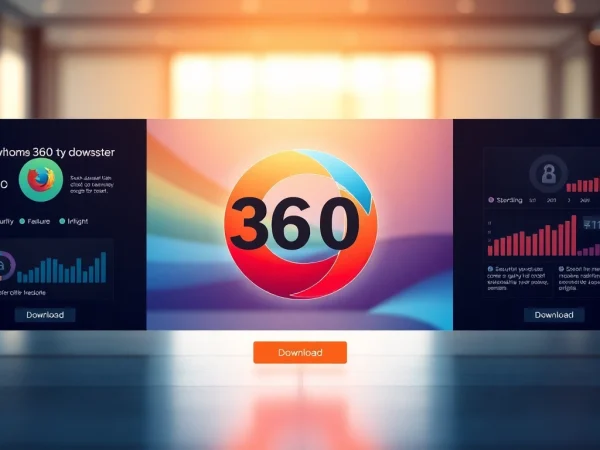Mastering AI Detection: Uncovering Techniques and Best Practices
Understanding AI Detection
In the ever-evolving landscape of content creation, the advent of artificial intelligence (AI) has brought both opportunities and challenges. With tools capable of generating high-quality text, understanding ai detection has become critical to ensure authenticity and originality in various sectors, including education, journalism, and marketing. In this article, we will explore the various aspects of AI detection, from its fundamentals to the challenges and solutions in accurate detection methods.
What is AI Detection?
AI detection refers to the methodologies and tools employed to identify whether a given piece of content has been generated by an AI model. This process involves analyzing the structure, syntax, and semantics of the text to trace its origin. With the proliferation of AI writing assistants, detection tools have become essential for maintaining the integrity of content across various domains.
The Importance of AI Detection in Content Creation
The significance of AI detection can be understood through several lenses. For educators, it helps to uphold academic honesty by identifying AI-generated assignments. Content creators benefit from ensuring their work is authentic and free of plagiarized material. In journalism, distinguishing between human-generated content and AI-generated snippets is vital for maintaining trust and credibility with audiences. Furthermore, businesses leveraging AI need to ensure compliance with industry standards and regulations regarding content authenticity.
Common AI Detection Techniques
Various methods are utilized in AI detection, including:
- Statistical Analysis: This involves examining linguistic patterns and anomalies to ascertain whether a text is likely generated by an AI.
- Machine Learning Algorithms: Many detection tools employ machine learning to adapt and improve their accuracy over time based on new data.
- Text Structure Analysis: Analyzing sentence structure and patterns typical of AI writing, such as repetitive phrases or unusual word choices.
- Metadata Evaluation: Checking for information embedded within the text that might indicate AI usage, such as specific tags or markers.
How AI Detection Works
Algorithms Behind AI Detection
The algorithms used in AI detection vary widely, but they typically focus on a few key areas: linguistic features, originality, and context analysis. By leveraging large datasets, these algorithms can learn to differentiate between human-written content and AI-generated text.
Types of AI Detection Tools
There are several types of tools available for AI detection:
- Standalone Detection Tools: These are dedicated applications that focus solely on identifying AI-generated content. Users input text, and the system analyzes it against its algorithms.
- Integrated Solutions: AI detection can also be a feature of broader content management systems that help generate, edit, and review text, providing detection as part of a suite of capabilities.
- API Services: Some platforms offer API access that enables developers to integrate AI detection capabilities into their applications or workflows.
Interpreting AI Detection Results
Understanding the output from AI detection tools can be complex. Results typically include an AI score or classification indicating the likelihood of AI involvement. It’s crucial for users to appreciate that these scores are not definitive but rather indicative, requiring further analysis and context to make informed decisions.
Challenges in AI Detection
Limitations of Current AI Detection Methods
Despite advancements, many AI detection methods face significant challenges, such as:
- Inaccuracies: AI detection tools can sometimes yield false positives (flagging human-written content as AI-generated) or false negatives (failing to identify AI-generated content).
- Adversarial AI: As AI models become more sophisticated, they can mimic human writing styles more effectively, making detection increasingly difficult.
- Changing Patterns: AI models are constantly evolving, requiring detection methods to adapt rapidly; a lag in updates can decrease effectiveness.
Understanding False Positives and Negatives
False positives can undermine trust in detection technologies, leading stakeholders to question the reliability of their results. Conversely, false negatives can allow unchecked AI-generated content to proliferate, which can be detrimental in sensitive fields like academia and journalism. Understanding these limitations is crucial for anyone relying on detection tools.
Ethical Considerations in AI Detection
Ethics plays a significant role in the deployment of AI detection tools. Questions surrounding privacy, the potential misuse of detection data, and the implications of labeling content as AI-generated without proper context must be carefully considered. Developing transparent and fair methodologies for AI detection is essential for preserving ethical standards in content creation.
Improving AI Detection Accuracy
Best Practices for Reliable AI Detection
To enhance the reliability of AI detection, consider implementing the following best practices:
- Regular Updates: Keeping detection algorithms updated ensures they adapt to new AI generation methods.
- Diverse Training Datasets: Utilizing varied datasets for training helps capture a range of writing styles and formats, enhancing detection accuracy.
- Cross-verification: Employing multiple detection tools and methods can provide a more comprehensive assessment of content.
Data Sets and Training Models
The foundation of effective AI detection lies in robust data sets. Training models on a wide array of both human-written and AI-generated content allows them to learn nuanced differences. The more diverse the training data, the better the model can generalize and identify patterns indicative of AI-generated text.
Future Trends in AI Detection Technology
As AI technology continues to evolve, so too will the tools for detecting AI-generated content. Emerging trends include:
- Real-time Analysis: Tools will increasingly provide real-time feedback for content creators, allowing for immediate editing and verification.
- Integration with Other Technologies: Combining AI detection with natural language processing (NLP) and machine learning could lead to enhanced detection capabilities.
- User-Friendly Interfaces: Future tools are expected to feature intuitive designs, making AI detection accessible to a broader audience.
Implementing AI Detection Solutions
Steps to Integrate AI Detection in Workflow
Integrating AI detection into existing workflows requires careful planning. Here are key steps to follow:
- Assessment: Evaluate the current content generation process and identify points where AI detection can add value.
- Tool Selection: Choose appropriate detection tools that align with your specific needs and operational scale.
- Training: Train staff on how to use these tools effectively, ensuring they understand the implications of the results.
- Continuous Improvement: Regularly review and adjust the integration process based on feedback and technological advancements.
Measuring Effectiveness of AI Detection Tools
To quantify the effectiveness of AI detection tools, consider the following metrics:
- Detection Accuracy: Evaluate how often the tool correctly identifies AI-generated content compared to human-generated content.
- User Feedback: Collect qualitative data from users regarding the tool’s usability and perceived accuracy.
- Impact on Workflows: Assess changes in workflow efficiency with the integration of the detection tool, including improvements in content quality.
Real-world Applications of AI Detection
AI detection is being implemented across various sectors:
- Education: Schools and universities use detection tools to maintain academic integrity by verifying that student submissions are original.
- Journalism: News outlets deploy AI detection to ensure the authenticity of sources and to avoid spreading misinformation.
- Marketing: Companies utilize AI detection to safeguard their brand’s reputation by ensuring all published content meets originality standards.










